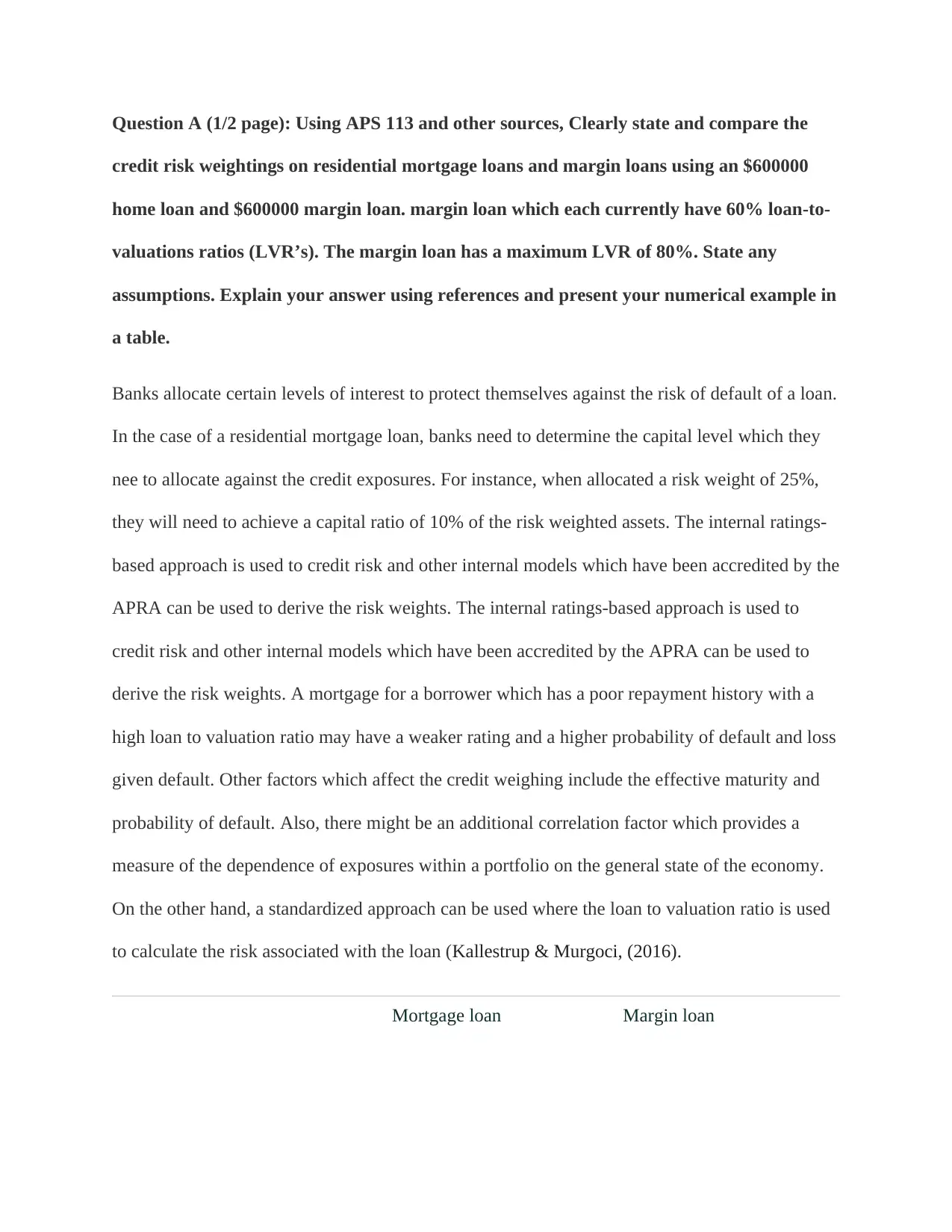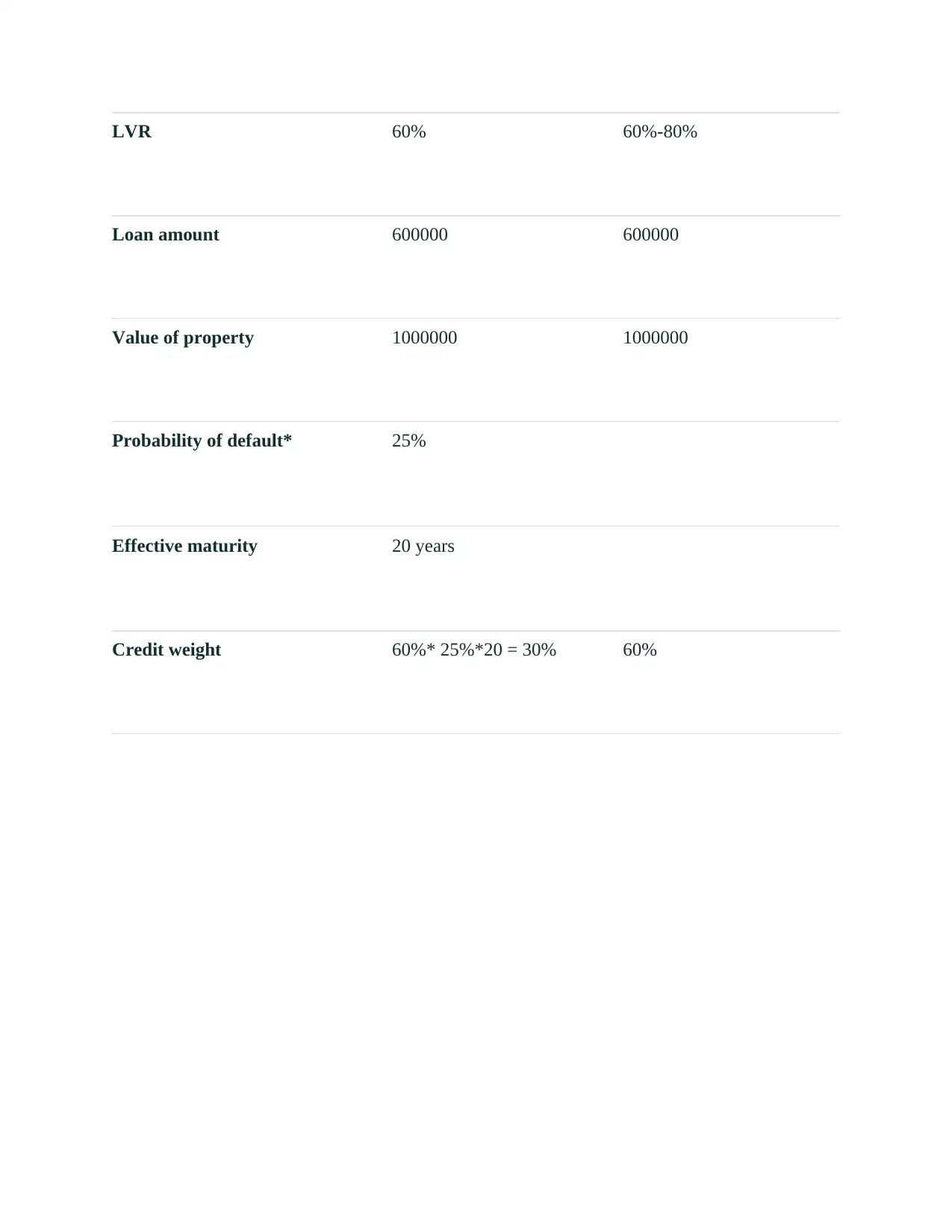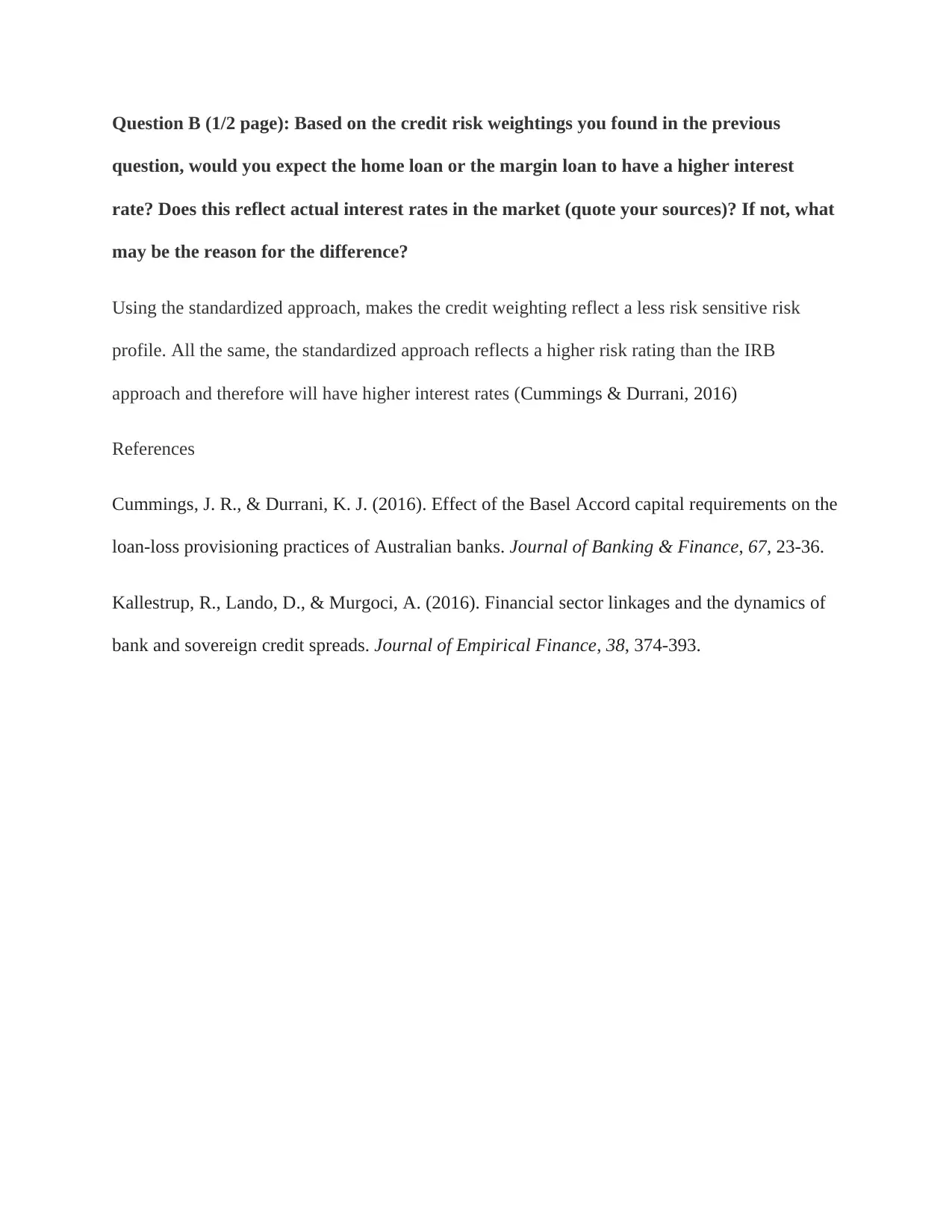Comparing Credit Risk: Home Loan, Margin Loan, and Interest Rates
VerifiedAdded on 2023/06/04
|3
|568
|368
Homework Assignment
AI Summary
This assignment analyzes the credit risk associated with home loans and margin loans, using a standardized approach. The analysis compares risk weightings and interest rates for both types of loans, considering factors such as loan-to-value ratios and probability of default. The assignment explores how these factors influence the interest rates charged by banks, referencing academic sources to support the analysis. Additionally, it discusses the potential differences between the standardized approach and the internal ratings-based approach in assessing credit risk and how these differences might affect interest rate calculations. The assignment includes a numerical example to illustrate the concepts and provides a comparison of the two loan types based on their respective risk profiles. The assignment also examines how market interest rates reflect the inherent risk associated with each type of loan.
1 out of 3




![[object Object]](/_next/static/media/star-bottom.7253800d.svg)